The New F.P. Journe Octa Divine, Redesigned Yet Again
It's just a new dial... but small changes can make a huge difference.
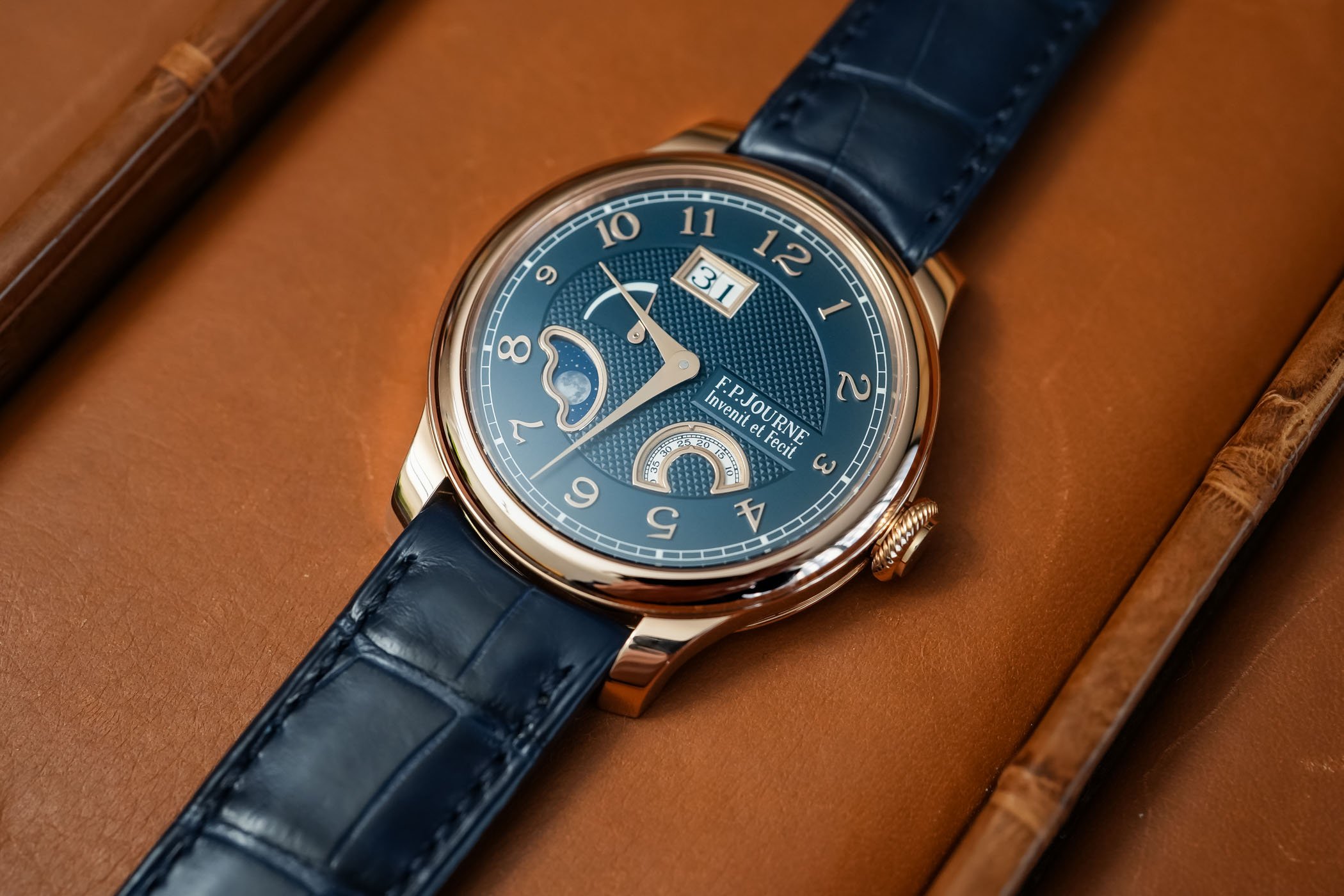
Two years after the introduction of the Octa movement, F.P. Journe presented the Octa Divine in 2003. With its combination of time, moon phase, large date, small seconds and power reserve indications, the Octa Divine’s automatic mechanism was capable of delivering 160 hours of power reserve with 120 hours of precision timekeeping. Initially introduced in 36mm and 38mm cases, the Octa Divine watch with a centrally arranged dial layout, as opposed to more unconventional earlier designs, was updated in 2016 and made available in 40mm and 42mm casing. As if to mark the twentieth anniversary of the launch of the original Octa Divine, F.P. Journe recently revisited the watch; let us see what has changed.
The Octa Movement
First, let us briefly talk about the Octa calibre 1300, for it is the cornerstone of the entire family, with many models built on it, including the Divine series. At the time of the launch, Octa was only the third movement developed by the F.P. Journe brand (since 1999), preceded by the Tourbillon with Remontoire d’Egalité and the Chronomètre à Resonance, and it was the first self-winding calibre of the company. It would become the base for every automatic watch produced by Journe since then, and the importance of Octa should not be lost; it gave name to the whole collection. According to François-Paul Journe, the autonomy, precision and practicality of the Octa calibre is a “horological ideal”.
Apart from the exceptional power reserve with guaranteed accuracy, the movement is constructed to incorporate fully integrated complications within the same volume. For that, Journe left 1mm of depth on the movement’s dial side, so there was space to integrate complications without altering dimensions. Still, fitting future complications within the designated 1mm-thick area presented another challenge. One of the reasons responds to Journe’s distaste of classic modular construction, but also, business-wise, it was far more practical, for the movement with the complications would fit into the Octa case without the need to change the size of it (Octa case diameters changed over the years, but for other reasons). And the man loves challenges.
In 2004 F.P. Journe switched to manufacturing movements from gold, leaving brass altogether (almost), and the Octa calibre got a new designation, 1300.2, for it was the second generation. In 2007 a significant update to the Octa calibre happened when the bi-directional winding system was replaced by a more efficient unidirectional rotor with a self-locking ball-bearing system. This allowed for every wrist movement to be used towards winding the watch, no matter how insignificant. Since then, the 1300.3 has powered up every automatic timepiece made by F.P. Journe. The calibre with its off-centred gold rotor is always on display thanks to transparent casebacks, emphasising its importance.
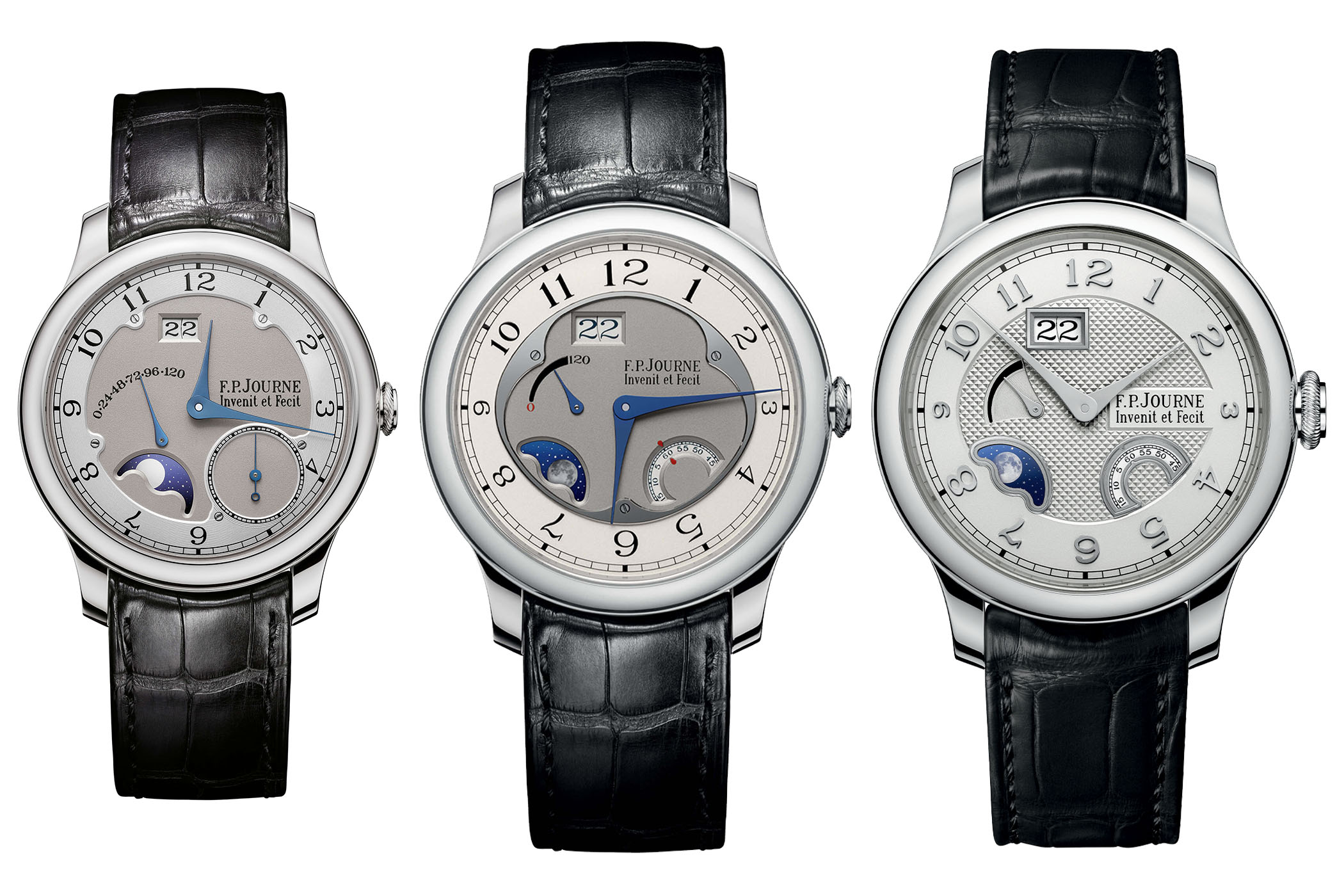
The Octa Divine
As mentioned earlier, F.P. Journe did not neglect the Octa Divine’s appearance, and the series received a facelift in 2016, a process that other collections underwent a year earlier. Also, 2015 marked the end of 38mm F.P. Journe watches with the release of 38 box sets. Each set contained 38mm stainless steel models of the Tourbillon Souverain Chronomètre à Résonance, the Octa Automatique, the Octa Calendrier and the Chronomètre Souverain. This farewell saddened many watch fans, but perhaps François-Paul Journe is closer to his clientele than we are, so for the last seven years, only 40mm and 42mm Octa models were produced, Octa Divine included.
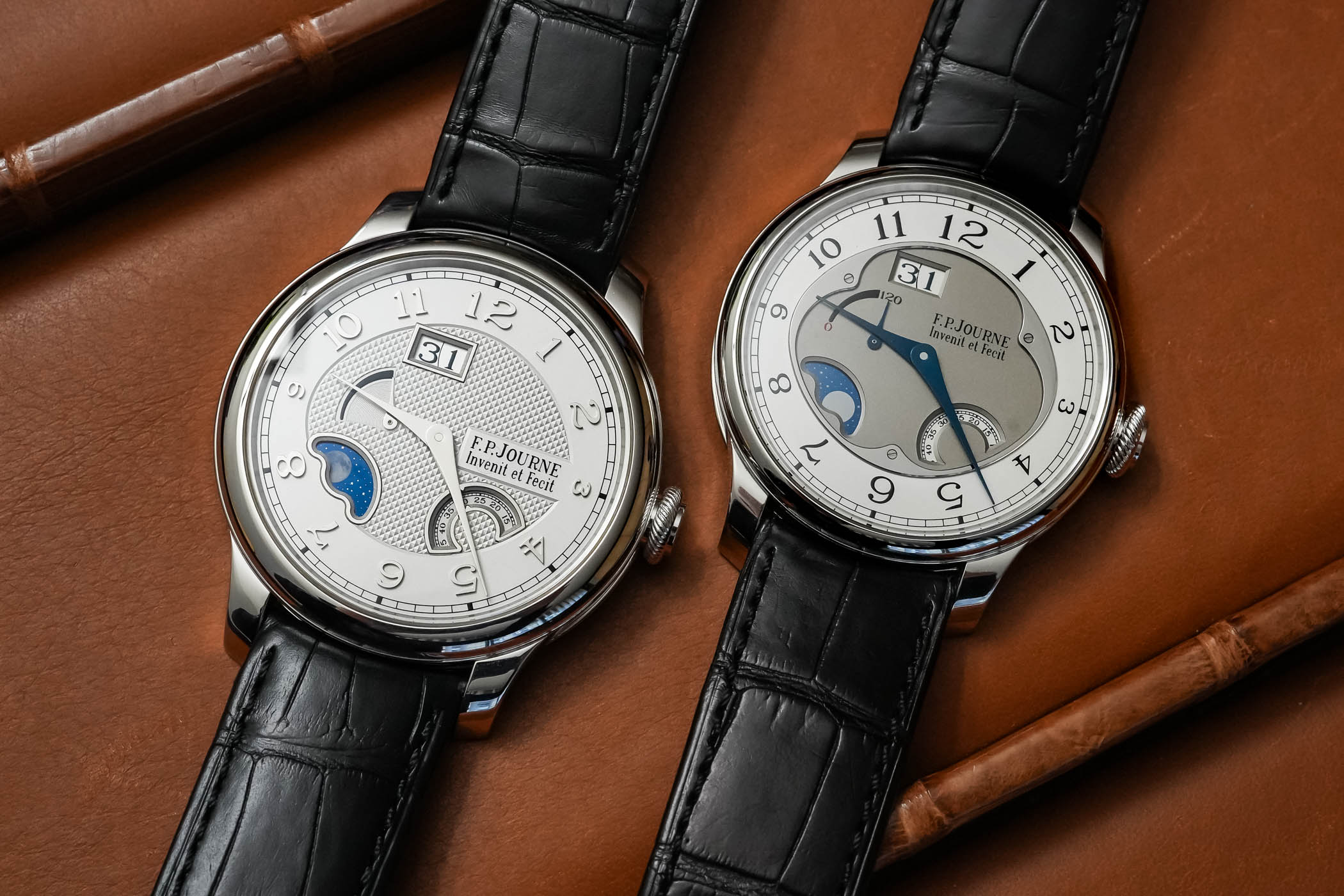
The new 42mm case size meant that a new dial was needed, so the dial got a bit of attention. The Octa Divine Nouvelle kept the indications and received a larger date aperture and moon displayed on a tinted sapphire disc. The power reserve indicator was simplified, and the central dial ring from Journe’s Quantième Perpétuel was added. Last but not least, the small seconds disc was introduced to replace the conventional sub-dial with a hand. The changes improved legibility and added modernity to the watch’s appearance, making it look less alien than the already updated and newer F.P. Journe’s collections. FPJ kept the signature blue hour and minute hands.
Come 2023, and the Octa Divine gets redesigned again. This time, the changes are aesthetical, conveying a more classical and masculine look while keeping some twists, like the numerals being of a different size depending on their positions. The new iteration comes in 40mm and 42mm rose gold or platinum cases, matching gold or platinum 5-row bracelets and leather straps, with new dial designs to support your precious metal preference.
This new F.P. Journe Octa Divine loses the oval-shaped frame-like polished element that was screwed to the dial base, so there are no more screws dial side. This, and further simplifying the power reserve indicator, opened up dial space to be decorated with guilloché, a welcome touch. To simplify, FPJ is here applying the same recipe to what’s been done on the perpetual calendar in 2020.
The dial is now whitened silver – or blue for the boutique edition. The date aperture, moon phase, and the disc window arc for the seconds are now elegantly framed, and the odd-sized hour indices are applied. All these elements are crafted from white gold for the platinum version and rose gold matching the gold case. The seconds at 4:30 are no longer indicated by the red marker introduced in 2016, as the new dial leaves no room for the aggressive colour; it is all about tranquillity. The hour and minute hands and the power reserve indicator hand are not FPJ-blue; they are rhodium plated or gilded steel, depending on the case material. With the demise of the printed numerals, the F.P. Journe Invenit et Fecit printed logo loses its position on the dial. It is now found on a rectangular plaque protruding at 3 o’clock, making it more pronounced.
Overall, the dial redesign looks positive. If you were to compare the original model from 2003 with a 2016 update, perhaps you would feel different, but the switch from 2016 to 2023 editions seems to be working just fine.
The Octa Divine case is the marvel of consistency and proves that there’s no need to change something that is doing its job well. The case is restrained, classical, and entirely polished and has a rounded bezel and recessed casebands. It is distinctive, though; if ever in doubt, look at the oversized, flat and knurled crown. The case and lug design allows Octa Divine to accommodate smaller wrists, so even the most extensive 42mm reference would feel comfortable.
Since the Octa Divine case suffered no improvements, let us move on to the calibre, which is, as you rightly guessed, the 1300.3, made of gold and equipped to display central hours and minutes, large date, small seconds at 4:30, retrograde power reserve at 10 and moon phase. The unidirectional winding via the 22k gold guilloché and slightly off-centred rotor help reach the maximum power reserve quickly. Naturally, you can use the crown for even faster winding, which also sets the time, date, and moon phases. The movement features the self-compensating free-sprung balance spring, a balance with four inertia weights, a flat Anachron spring, and in-line lever escapement, to name a few particularities. This efficient calibre is decorated superbly; the bridges bear circular Geneva stripes with hand-polished bevels, and the main plate is circular grained.
All in all, the Octa Divine is a beautiful specimen of Haute Horlogerie. Any edition should make the collector or a mundane wearer happy. Still, the 2023 updated Octa Divine version, which has adopted styles from the F.P. Journe Quantième Perpétuel introduced in 2020, looks refreshed and keeps the classic FPJ charm. Prices are CHF 48,400 in red gold and CHF 51,400 in platinum; for more information, visit your nearest dealer, or go to www.fpjourne.com.


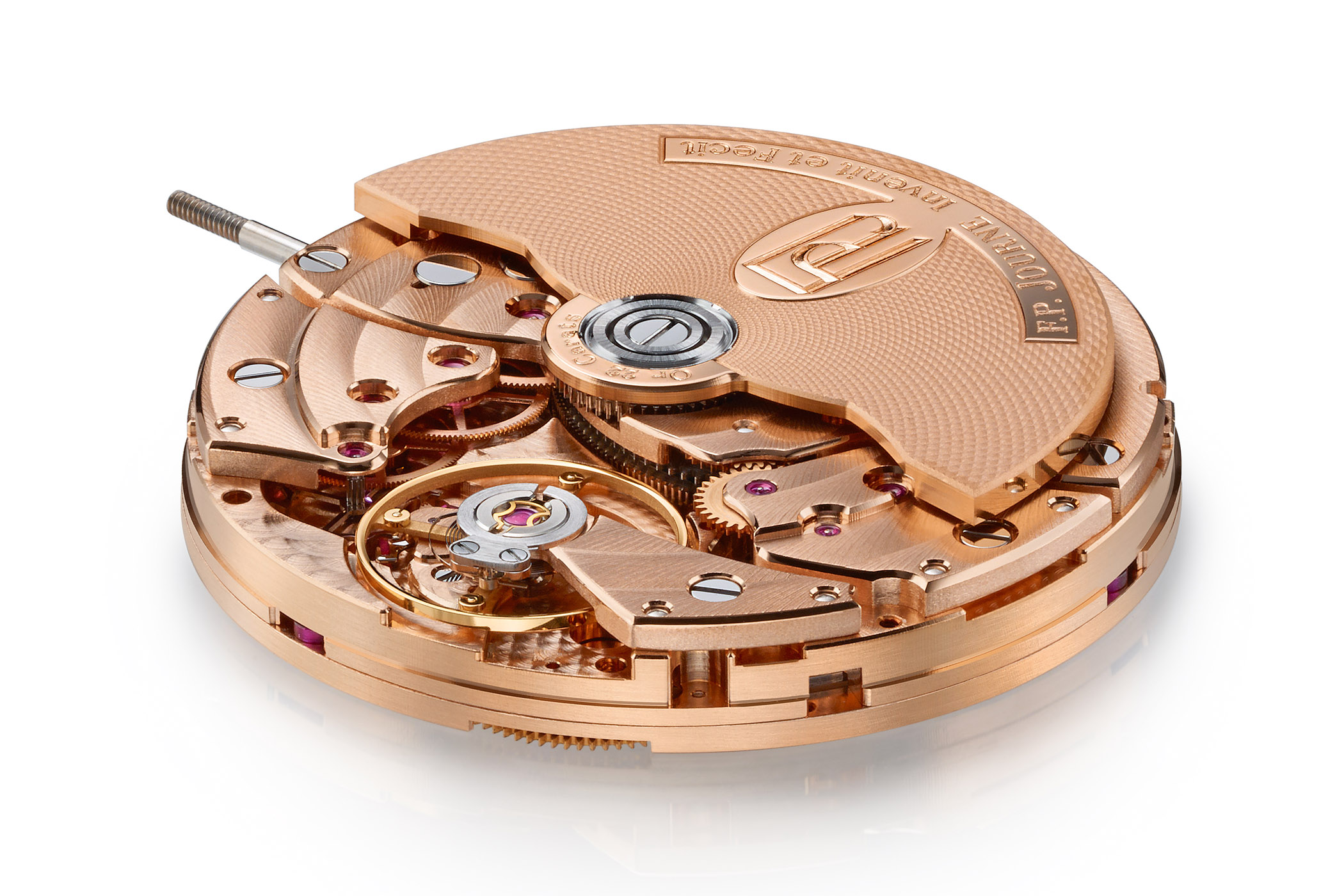
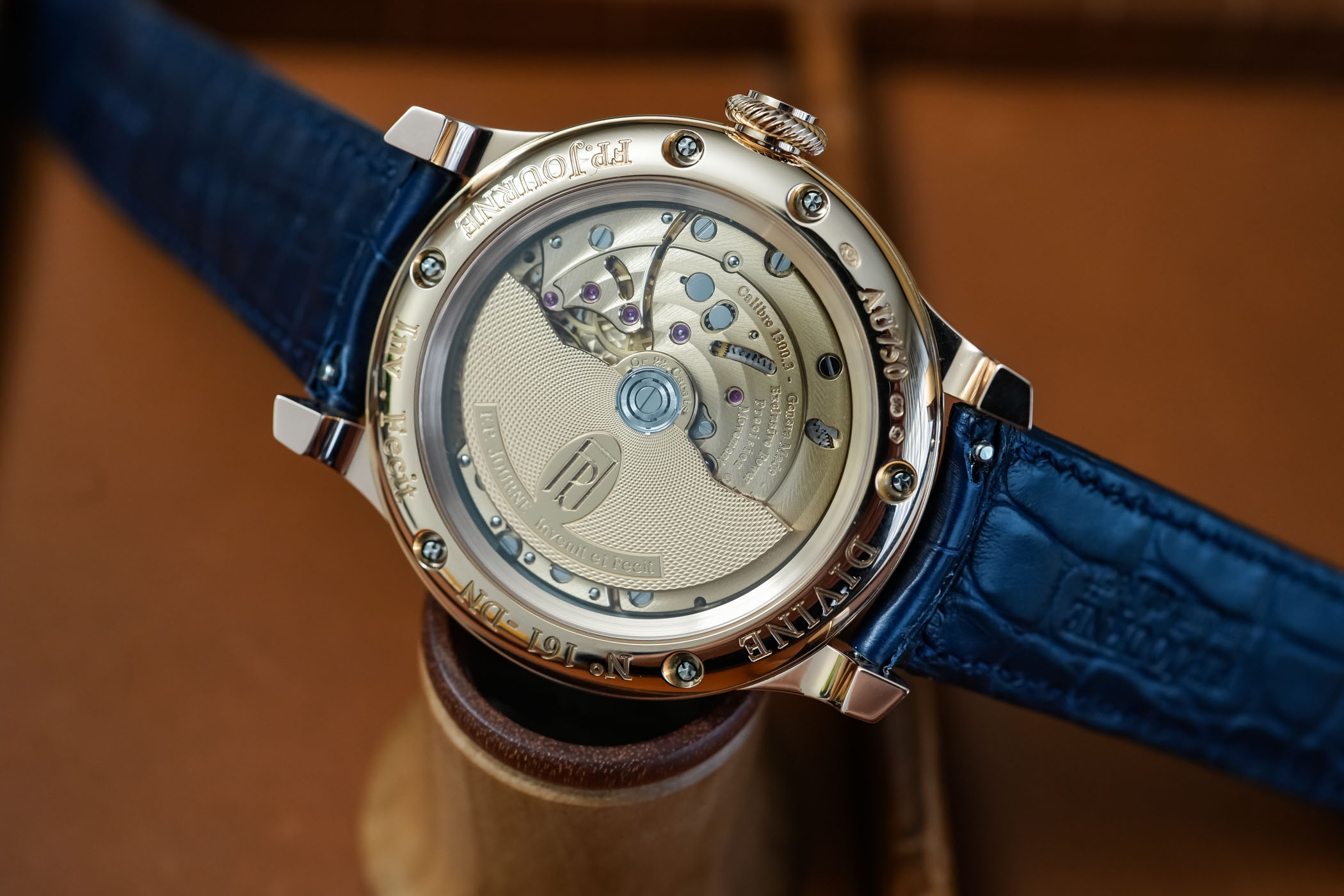
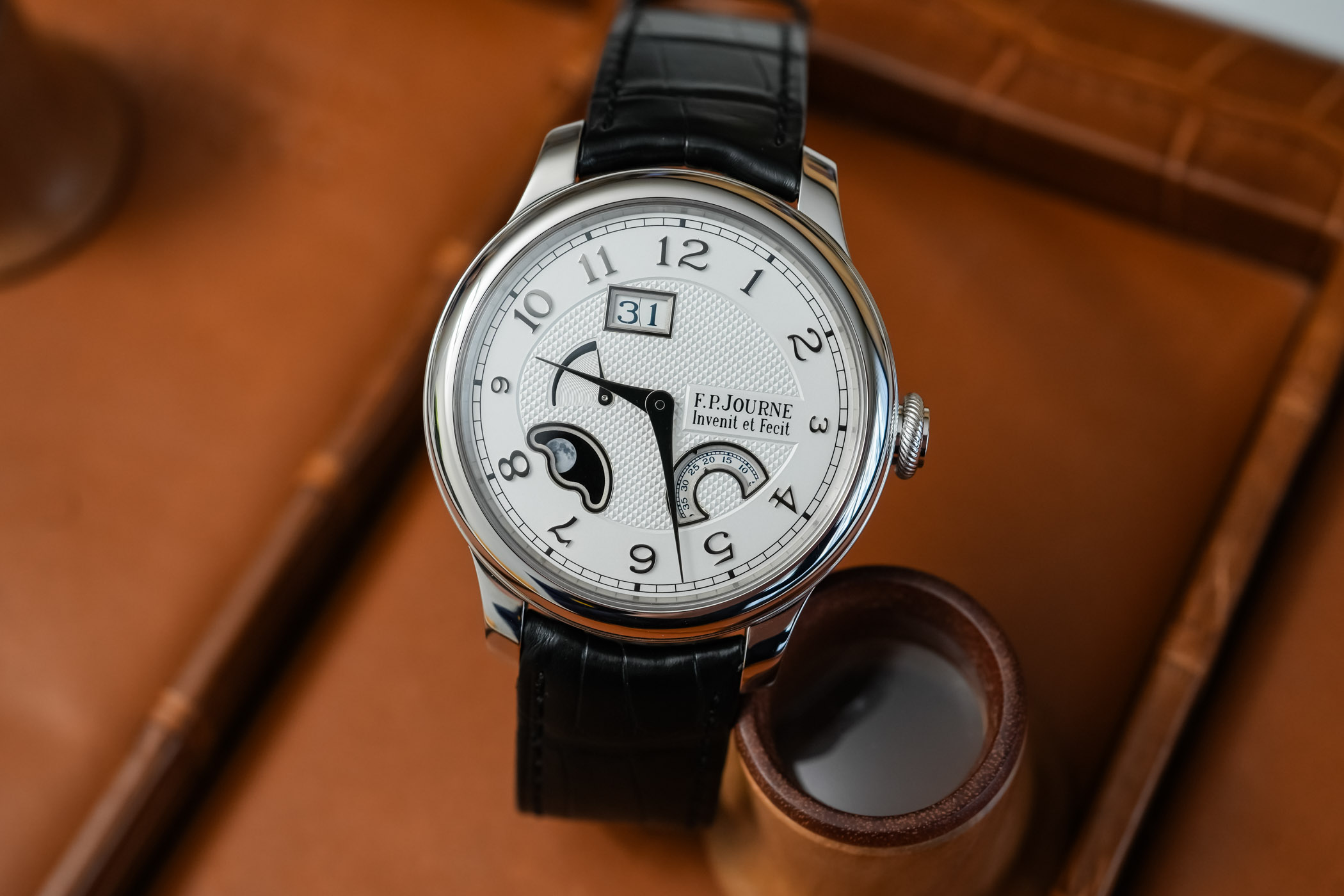
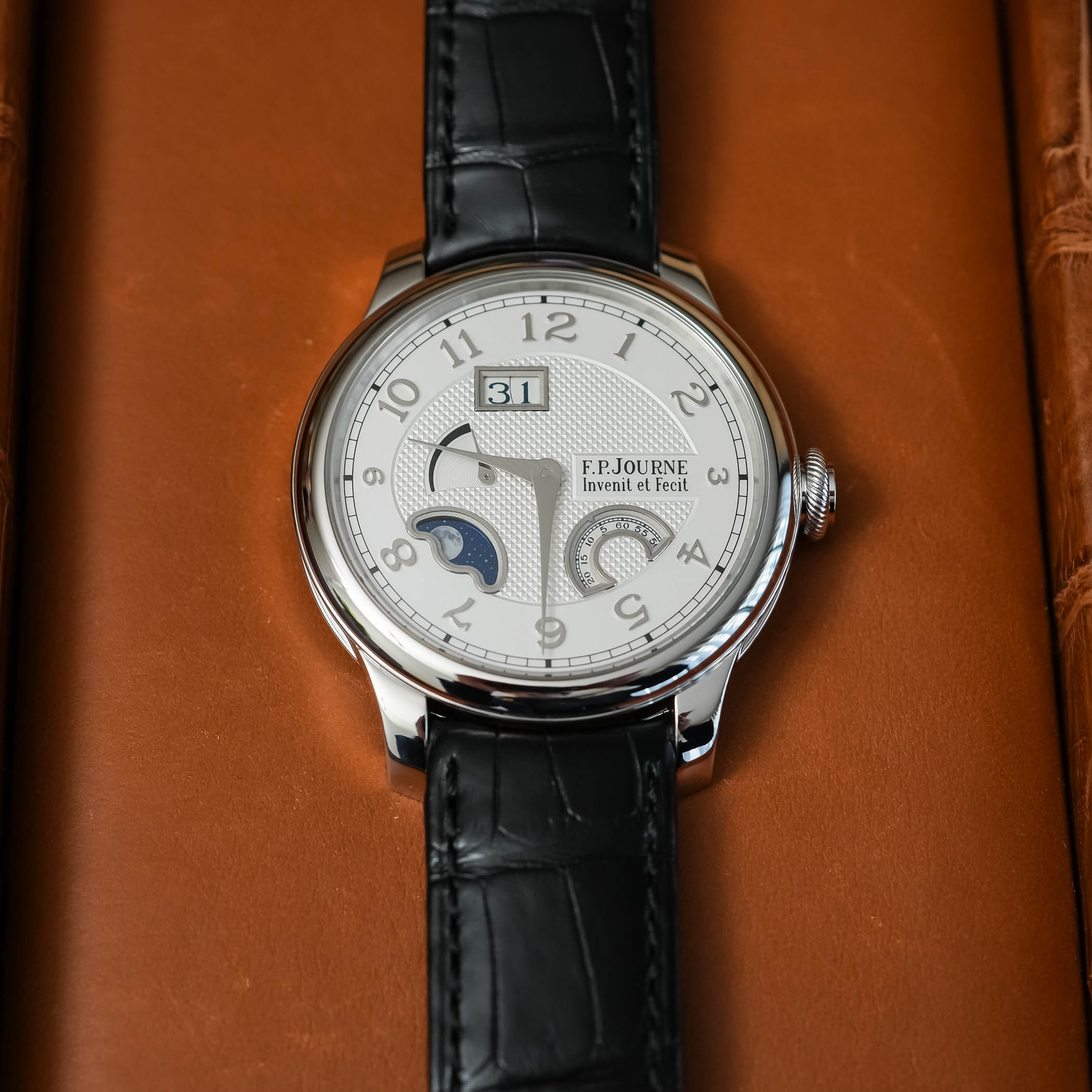
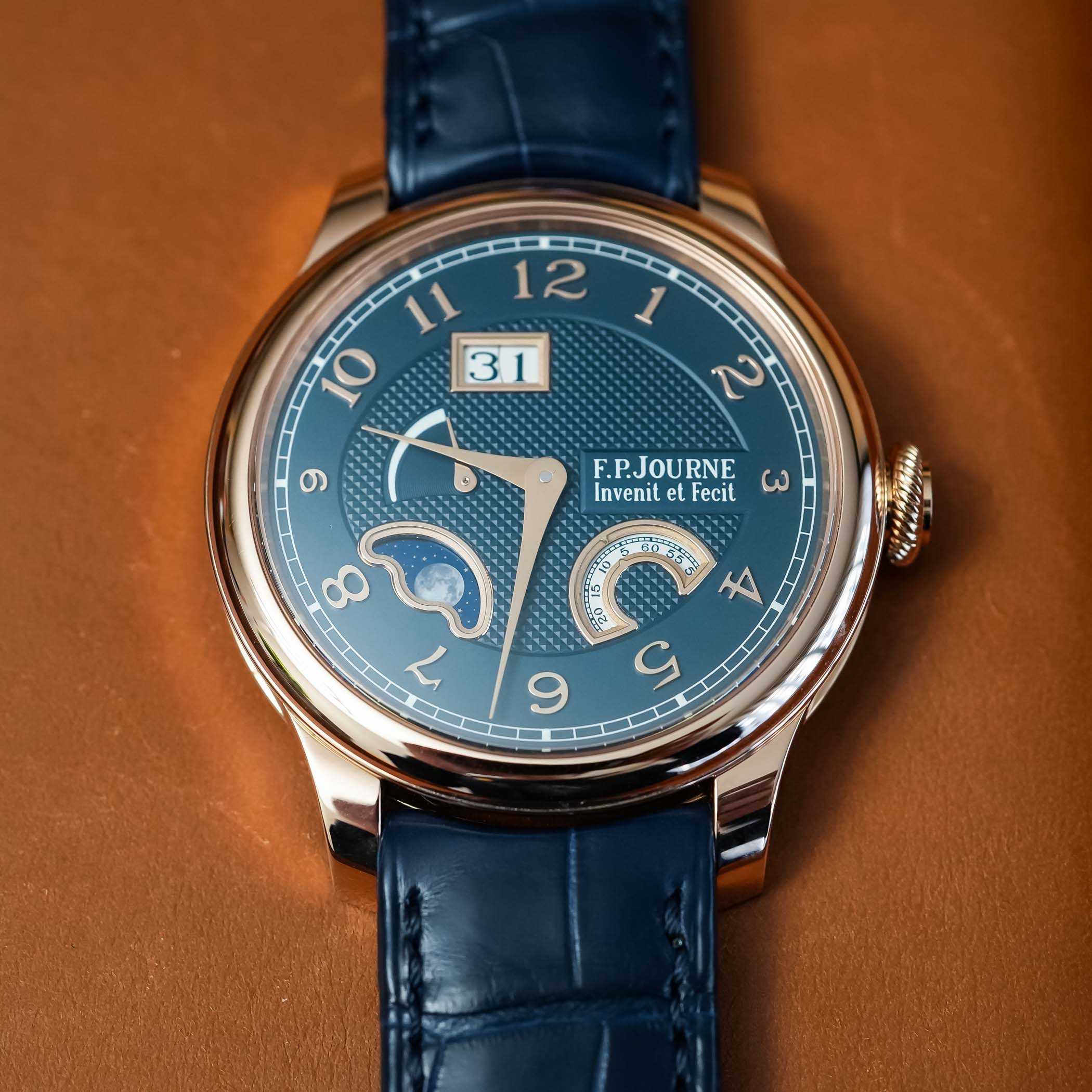
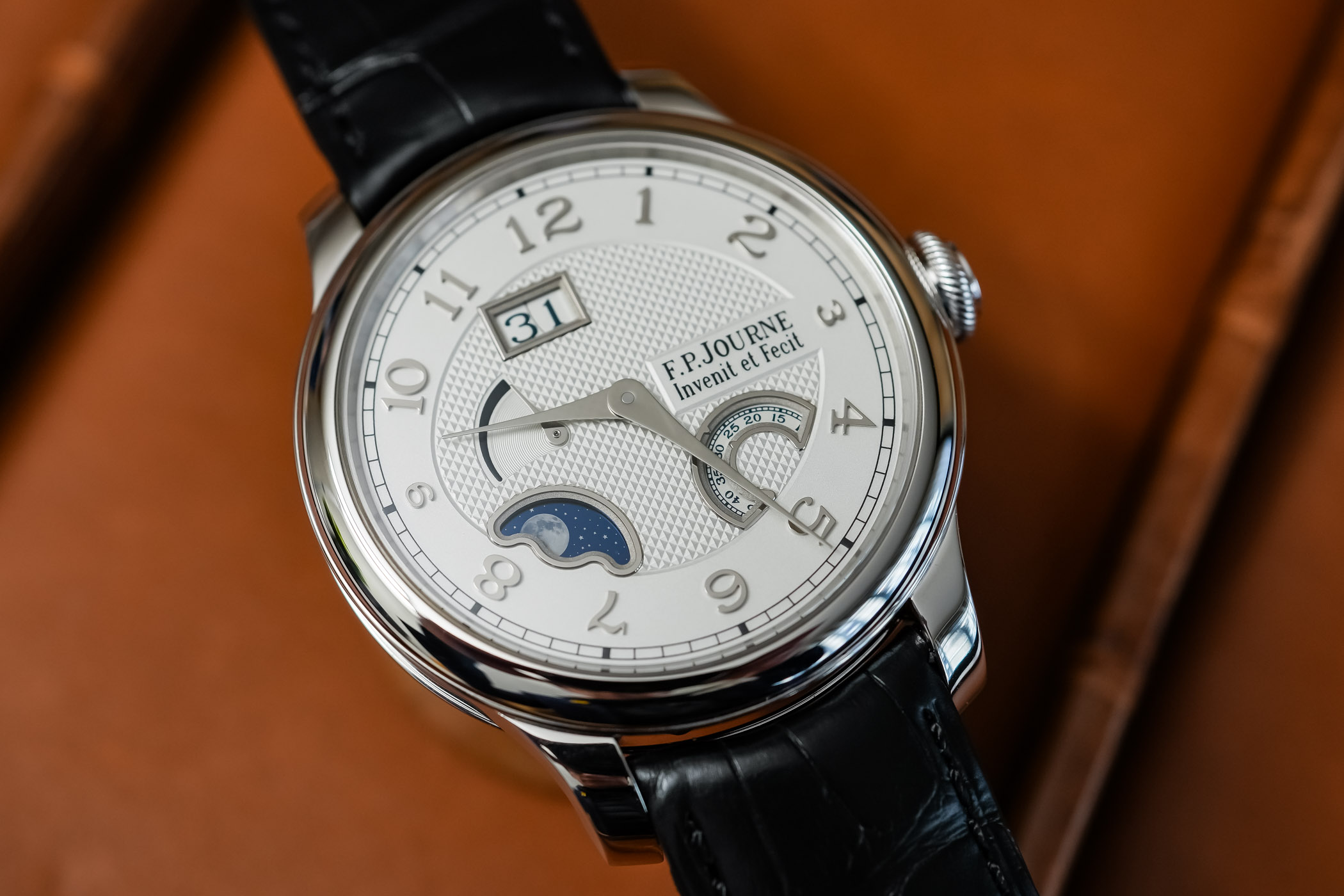
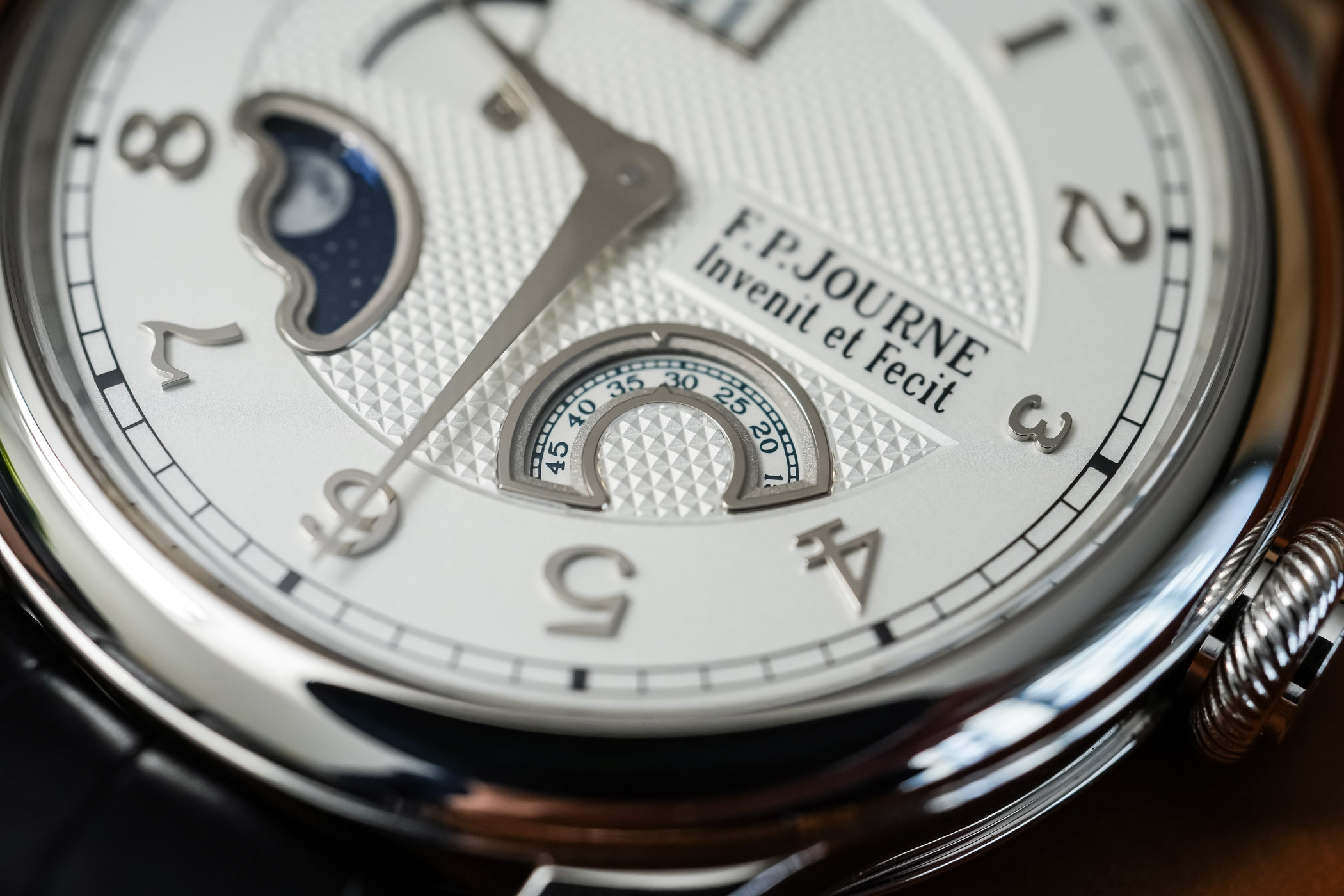
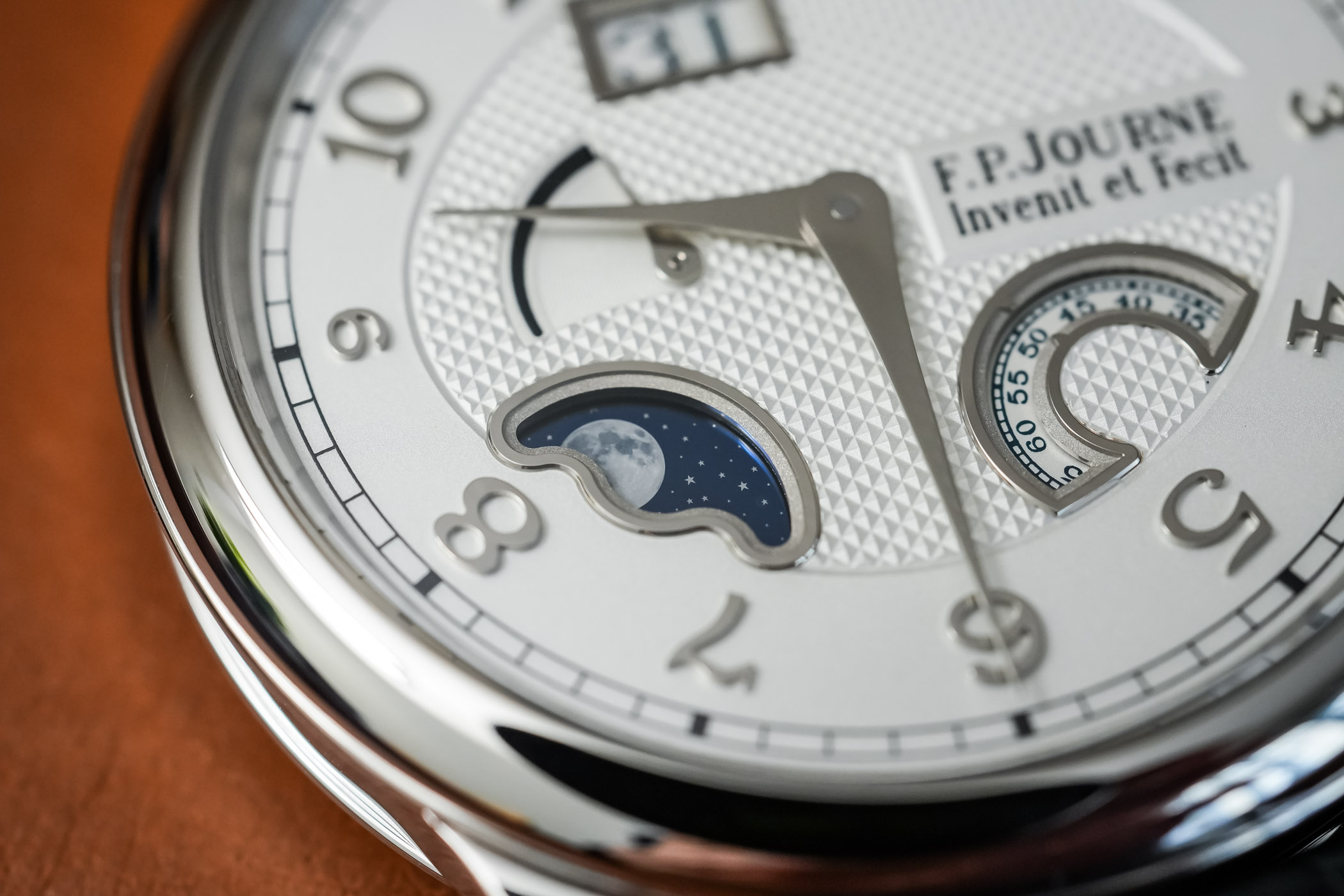
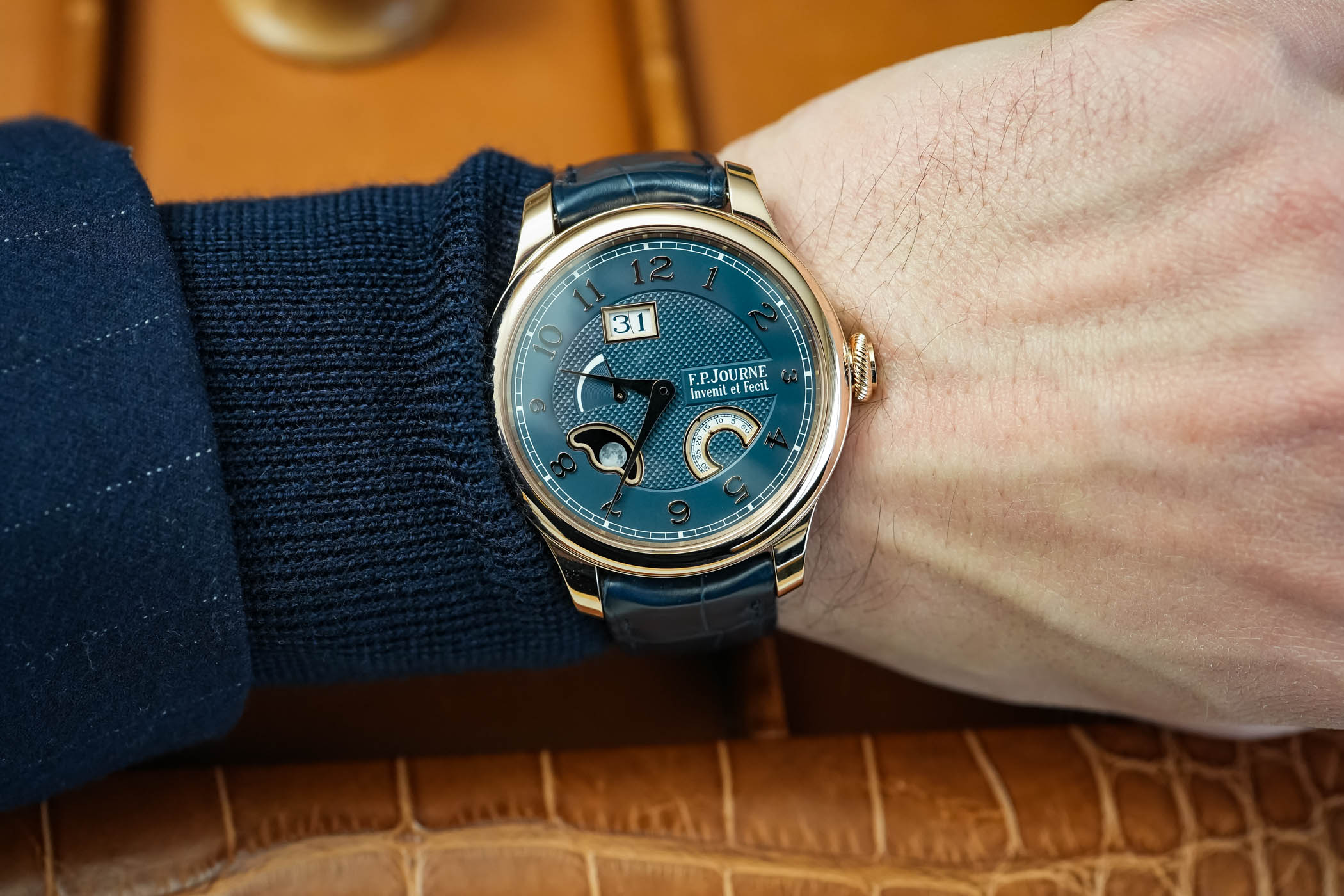
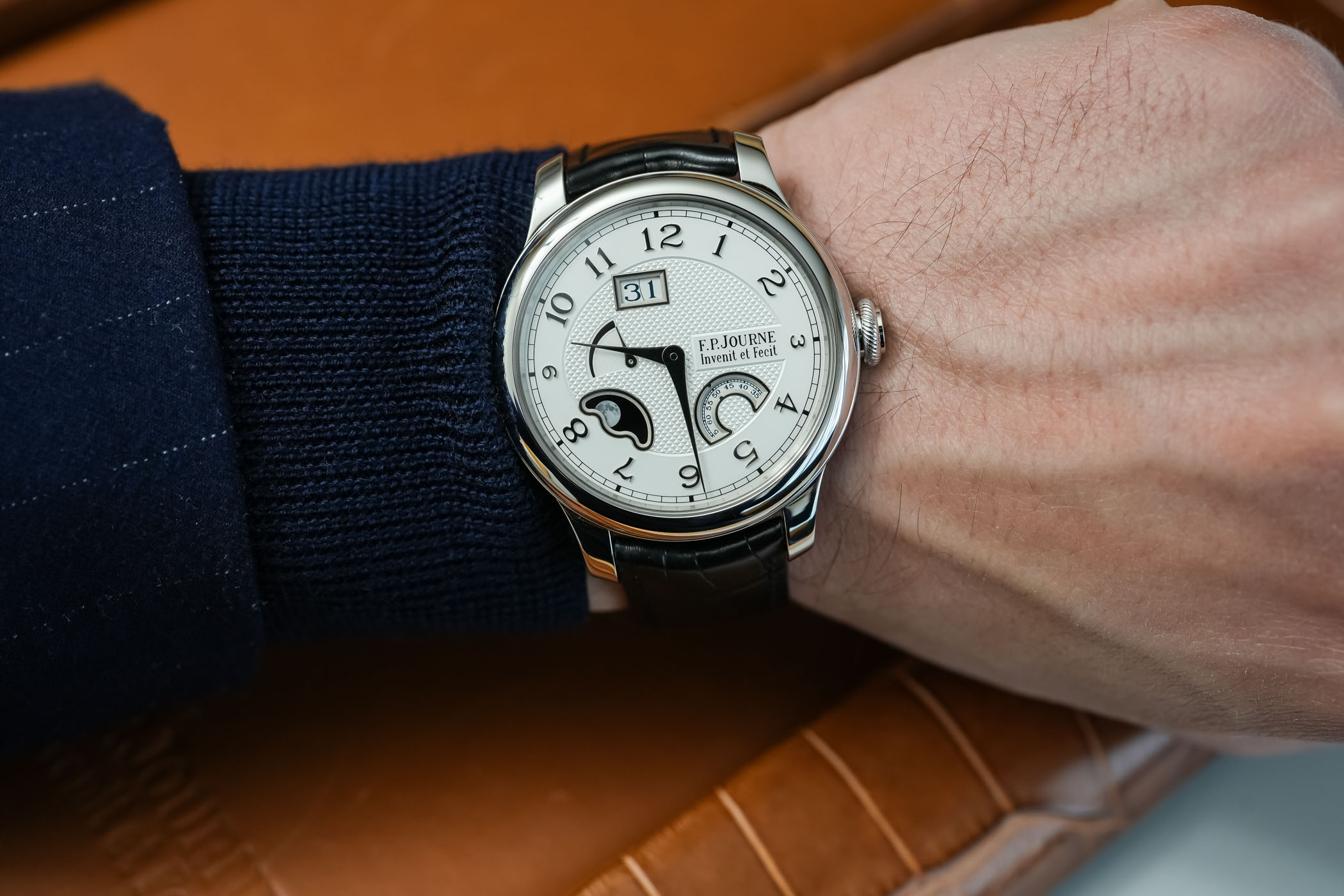

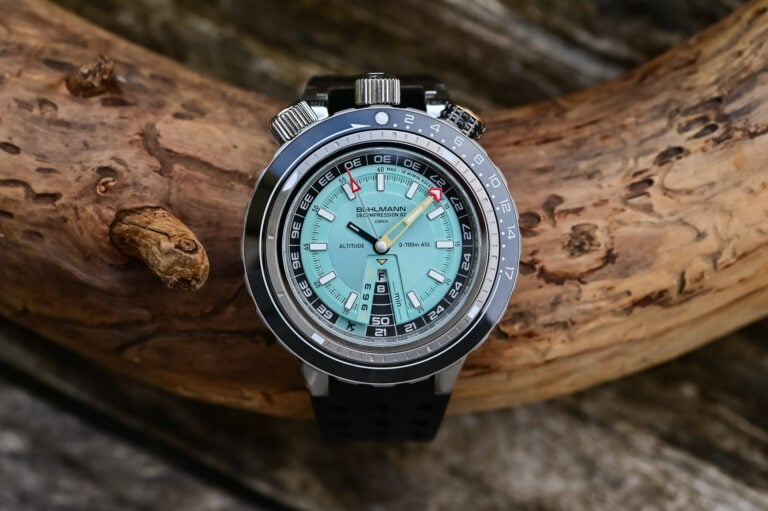
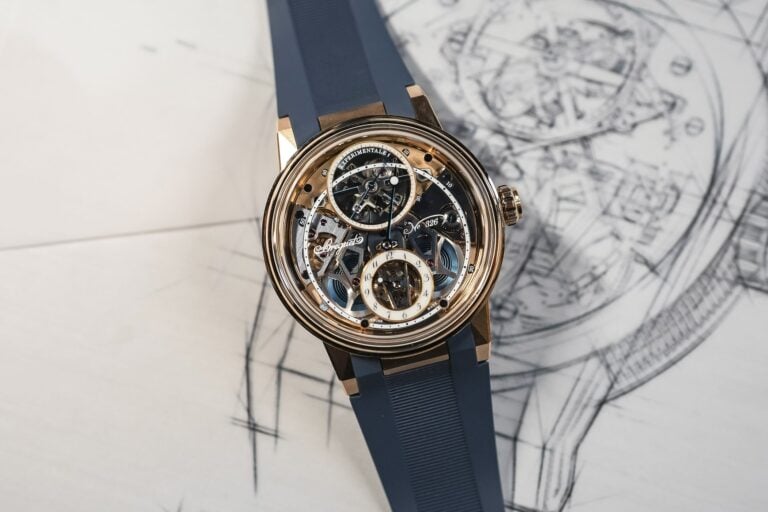
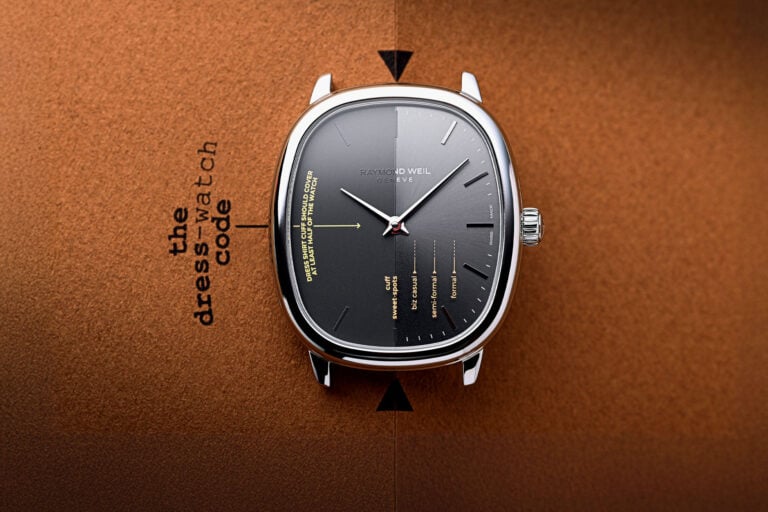
5 responses
Beauty
Since there are no photos of it, I assume you didn’t get to see the bracelets?
@RP – no unfortunately we were only able to see the watches on leather straps (bracelets are somehow a rare option at FPJ, mostly because of their price). You can see them on the brand’s website.
No more exposed screws on the dial? Huh, I thought it was one of the key features of their design language. How will I now recognize an Octa in the wild?
Do you have any more photos of the blue and gold version you can share?